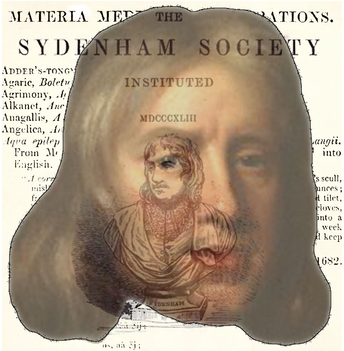Thomas Sydenham1624–1689
Sydenham has been called ‘The father of English medicine’ as well as ‘the English Hippocrates’, but little is known about his life. Lettsom encompassed knowledge about him succinctly: “that he was a soldier; …. that he pursued some short studies; and that he died a martyr to the gout”. In his Medical Observations Sydenham argued for precision in observation when describing diseases: “In writing the history of a disease, every philosophical hypothesis whatsoever, that has previously occupied the mind of the author, should lie in abeyance. This being done, the clear and natural phenomena of the disease should be noted – these, and only these. They should be noted accurately, and in all their minuteness; in imitation of the exquisite industry of those painters who represent in their portraits the smallest moles and the faintest spots”. His novel approach to medical classification and treatment earned him enemies as well as friends, and amongst the latter he counted Boyle and Locke. Sydenham’s chorea was among the diseases he described; it has also been called St. Vitus dance and is an infection of the nervous system. Sydenham wrote his books in Latin, and many translations were made of them. The works became more readily available with the institution of the Sydenham Society in 1843. Not only Sydenham’s, but many other important books in medicine were translated into English by the Society, thereby carrying out a signally important role in the dissemination of new ideas. Sydenham is shown with the facing page of the Society’s publications (containing his portrait), together with the background from the first page of his Materia Medica.
